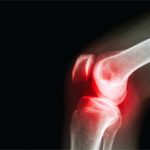(Reuters Health)—People with stiff and aching knees due to arthritis get better relief from physical therapy than from cortisone injections, according to a one-year military study comparing the two treatments.
A multi-disciplinary team of doctors reports in The New England Journal of Medicine that people who initially scored 107 on a 241-point scale measuring a combination of pain, stiffness and the ability to function saw their score improve by 65% when they underwent physical therapy and did home exercises.1
That’s significantly better than the 49% improvement seen among the volunteers who received repeated glucocorticoid injections.
“Physical therapy provided relief that was just as rapid as steroid injections did and, as a matter of fact, physical therapy relief was probably quicker,” chief author Gail Deyle, PT, DSc, DPT, OCS, FAAOMPT, a physical therapist and a senior faculty member of the Brooke Army Medical Center, San Antonio, tells Reuters Health in a telephone interview.
Although both treatments are common, there’s been debate about which is the most effective and little good data on which should be tried first. Yet there’s also been a trend away from physical therapy, at least since 2007, the researchers said.
“Injections may provide short-term relief, but they also increase the risk of infection and accelerated aging of the joint, including fractures of the joint surfaces,” Dr. Deyle tells Reuters Health in an email. “If the patient is also sent to see an orthopaedic surgeon, they may receive an MRI and perhaps be told that they are ‘bone on bone,’ leading patients to believe that there is little hope with treatment options other than more injections and eventual total knee replacement.”
“Only about 10% of patients are offered any form of physical therapy prior to getting a total knee replacement,” says Dr. Deyle, who is also a professor at Baylor University Graduate School.
The study has several limitations, but “the implication could be that injections should not be used first, nor should they be used in place of a physical therapy program that includes exercise” to manage knee symptoms, says Kim Bennell of the University of Melbourne and David Hunter of the University of Sydney in an editorial.2
But it’s not clear if the study will change practice.
“This is a great example of what a good program and motivated patients can do,” says David Karp, MD, PhD, chief of rheumatology at the University of Texas Southwestern Medical Center, Dallas, who was not involved in the study.
“This will not change management because it’s not an either/or situation” and doctors should be taking an integrated approach, he tells Reuters Health in a telephone interview.
Una Makris, MD, an osteoarthritis investigator at the Dallas VA Medical Center, who was also not involved in the study, also said it won’t change her practice. But the study does show that having “booster” sessions with a doctor or therapist can be important for success.
The researchers treated 156 volunteers—all active-duty or retired service members and their families with an average age of 56—at the Madigan Army Medical Center in Tacoma, Wash., or at Brooke. The research team included experts in orthopedics, rheumatology and physical therapy.
The volunteers in the injection group could receive up to three injections during the year of the study. Physical therapy, done in as many as 14 sessions, included finding ways to move the joint, and stretch and strengthen muscles without invoking pain.
All of that professional contact can be a key to doing well, says Dr. Karp. The problem is, “usually once the study is over, patients lose the effect, because they stop doing the exercises at home” and may not have as much support.
Although only 10% of patients in the physical therapy group did not show significant improvement after one year, the same was true for 26% of the volunteers who got cortisone injections.
There was little difference in annual cost of therapy. It was $2,113 for injections versus $2,131 for physical therapy.
“I’m hopeful this will push the pendulum in the direction where patients are offered low-risk strategies rather than being pushed down a pipeline that eventually leads to only one thing—total joint replacement,” Dr. Deyle says.
References
- Deyle GD, Allen CS, Allison SC, et al. Physical therapy vs. glucocorticoid injection for osteoarthritis of the knee. N Engl J Med. 2020 Apr 9;382(15):1420–1429.
- Bennell KL, Hunter DJ. Physical therapy before the needle for osteoarthritis of the knee. N Engl J Med. 2020 Apr 9;382(15):1470–1471.

